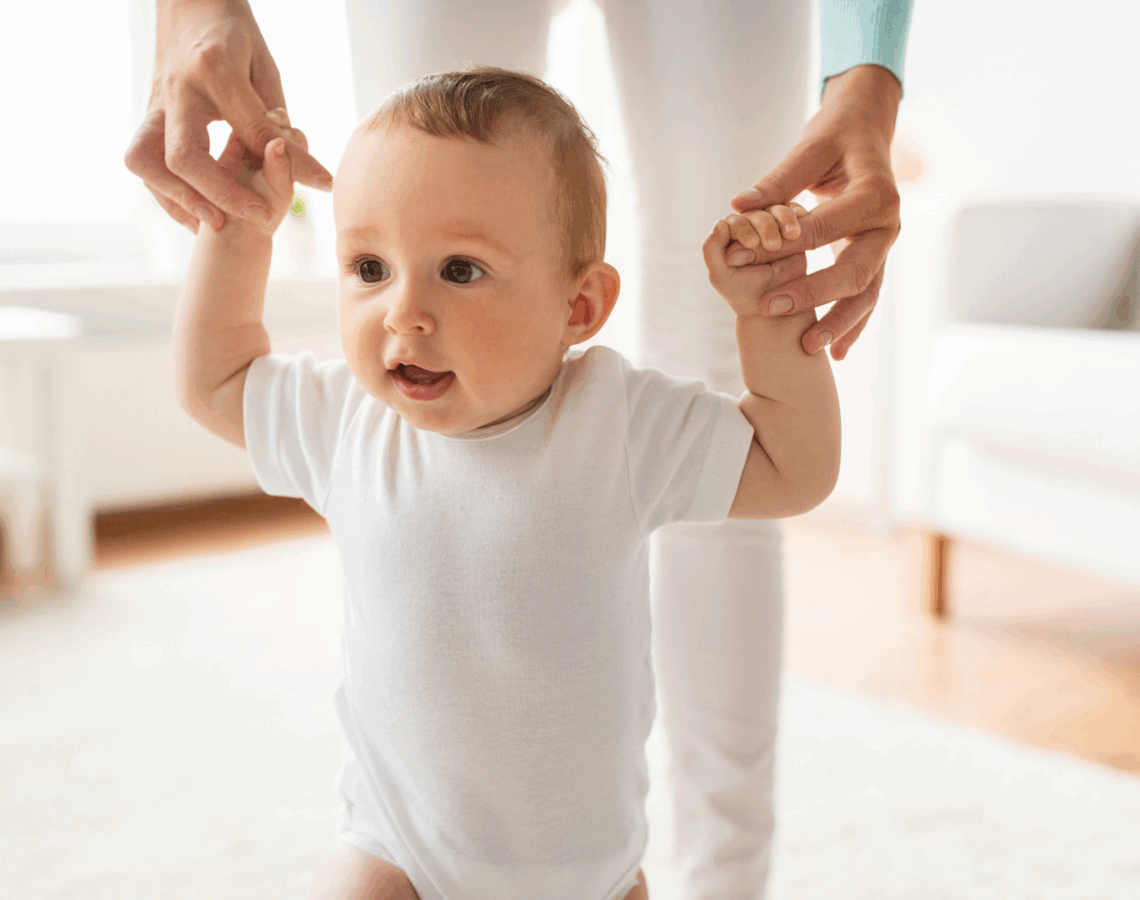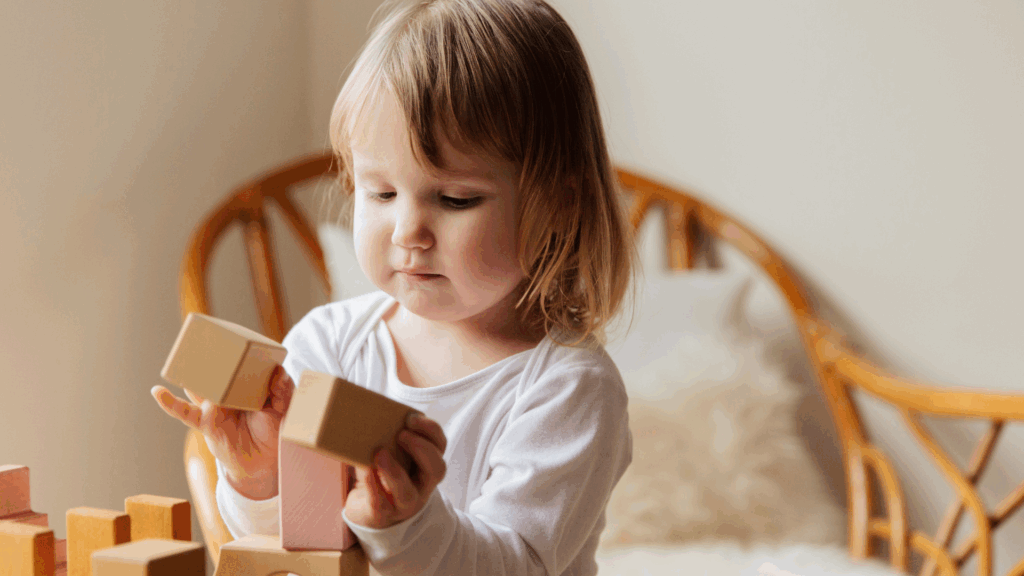Easy ways to get babies and toddlers moving daily

We all know moving our bodies is good for us, and it’s just as true for our littlest family members. In fact, the first 5 years of life are the most important when it comes to kids’ growth and development. It’s also during this time that they’ll develop habits that will take them into adulthood.
Whether it’s crawling, climbing, dancing or playing pretend, movement helps their little bodies grow big and strong. Active play is also important for brain development, supporting kids to explore, observe and learn from their environment. Every bit of active play counts, and it can be as simple as making the most of what’s around you.
Here are some practical tips to help get babies, toddlers and preschoolers moving more every day.
Active play for babies (0–12 months)
In those early weeks, your baby might not look active, but they’re already learning those critical gross motor skills that help support physical development. From birth, gentle movement and floor-based play in safe spaces helps them build the strength and coordination they’ll need later in life.
Before babies begin to crawl, the focus should be on movement and this can include reaching and grasping, pulling and pushing, moving their head, body and limbs during daily routines. Supervised play, including tummy time, is especially helpful for building strength and encouraging movement.
Movement activities and ideas for babies
- Give your baby supervised tummy time every day from birth. Start with 1-2 minutes each day and gradually build this up over time. Even those few minutes make a difference and helps strengthen their muscles. Over the first 12 months of your baby’s life, aim to build up to at least 30 minutes of tummy time spread out over the course of the day.
- Lie your baby on their back so they can kick and stretch their legs – a play gym or some colourful toys overhead can keep them engaged.
- Use everyday objects like soft balls, rattles or even household items (pots, pans, wooden spoons) to encourage reaching, pushing and grasping.
- Join in – sit on the floor and interact while they play. It’s great bonding time, and your baby will love watching your face and movements.
- Put on some music and gently sway or clap along.
- Make bath time fun with engaging toys that encourage play and gentle splashing.
- Once they’re on the move (around 8 months is common for crawling), create plenty of safe space to explore – and double check your baby-proofing!
Quick reminder: It’s recommended that babies under 2 shouldn’t have any screen time (TV, tablets, phones etc.).1 They learn best through face-to-face interactions and real-world play.
Why it matters:
- Builds strong bones and muscles
- Supports healthy brain development
- Boosts coordination and balance
- Encourages independence and confidence
- Helps with social and emotional development.

Active play for toddlers and preschoolers (1–5 years)
If your toddler doesn’t like to sit still – that’s a good thing! Kids this age are naturally wired to move. In fact, they need at least 3 hours of movement each day.2 That might sound like a lot, but it adds up quickly through play and everyday routines.
Simple ways to get toddlers moving:
- Walk whenever you can – ditch the car or stroller for short trips and let them set the pace.
- Head to the park to run, climb and swing – even better if you join in.
- Involve them in chores like unpacking groceries or sorting socks – they’ll feel useful and active.
- Keep a mix of toys on hand that encourage movement – think balls, ride-ons, dress-ups, building blocks and kites.
- Play games that get them moving: Hide and Seek, Follow the Leader, obstacle courses or dancing to their favourite tunes.
- Use everyday moments – blow bubbles outside, chase balloons indoors, or go barefoot on different surfaces to build sensory skills.
- Explore pretend play – move like animals, dance like superheroes or act out their favourite stories.
Screen time tip: For 2 to 5-year-olds, try to keep screen time to under 1 hour per day.
Why it matters:
- Supports healthy growth and weight
- Strengthens muscles, bones and the heart
- Builds coordination, reaction time and basic movement skills
- Boosts confidence and mental wellbeing
- Helps with focus, learning and making friends.

Managing down time
Little ones do need time to rest and recharge, but long periods of being strapped into prams, highchairs or car seats can hold them back from developing their natural movement skills. Try to avoid keeping them sitting still for more than 1 hour at a time (unless they’re asleep).
Handy tips:
- Take short breaks on longer car trips – stretch legs at a park or rest stop.
- Let your toddler walk part of the way, even if you bring the stroller along for tired legs.
- For short distances, try walking, scooting or pedalling instead of driving.
- Avoid baby walkers and jumpers – use of these aids restricts your baby from learning the skills needed for independent walking and physical development.
No matter how old your child is, active play is one of the best things you can do together as a family. It doesn’t have to be fancy or take up a lot of time, it’s all about finding moments to move, play and connect throughout the day.
Looking for more guidance?
Check out the Australian 24-Hour Movement Guidelines for clear, evidence-based advice on healthy movement for kids under 5.
Acknowledgement:
Content developed by Health and Wellbeing Queensland’s team of expert nutritionists, dietitians, and exercise physiologists in partnership with Children’s Health Queensland.
Sources:
- Australian Government Department of Health, Disability and Ageing. (2021) Physical activity and exercise guidelines for all Australians.https://www.health.gov.au/topics/physical-activity-and-exercise/physical-activity-and-exercise-guidelines-for-all-australians
- Australian Government Department of Health, Disability and Ageing. (2021) Guidelines for infants, toddlers and preschoolers (birth to 5 years) https://www.health.gov.au/topics/physical-activity-and-exercise/physical-activity-and-exercise-guidelines-for-all-australians/for-infants-toddlers-and-preschoolers-birth-to-5-years


